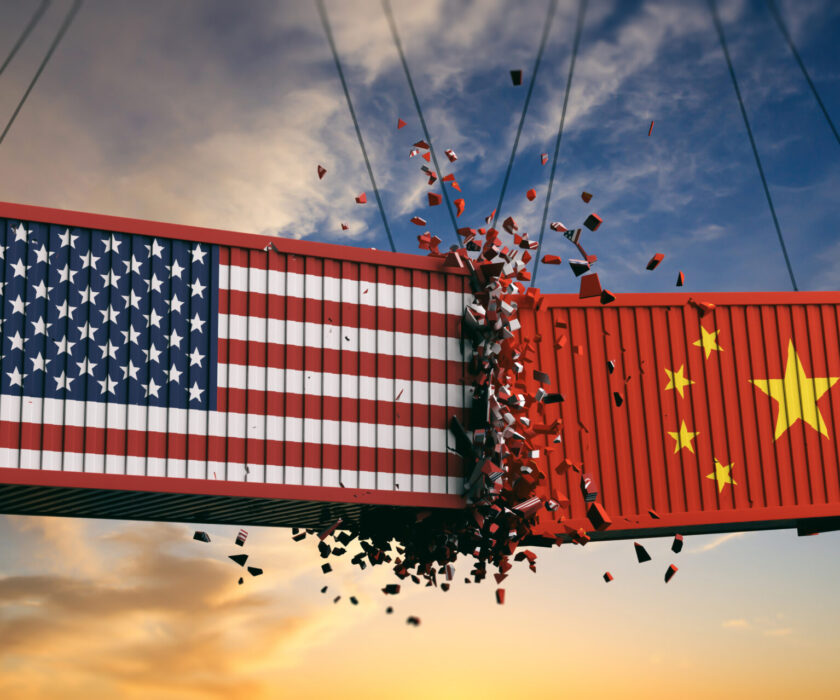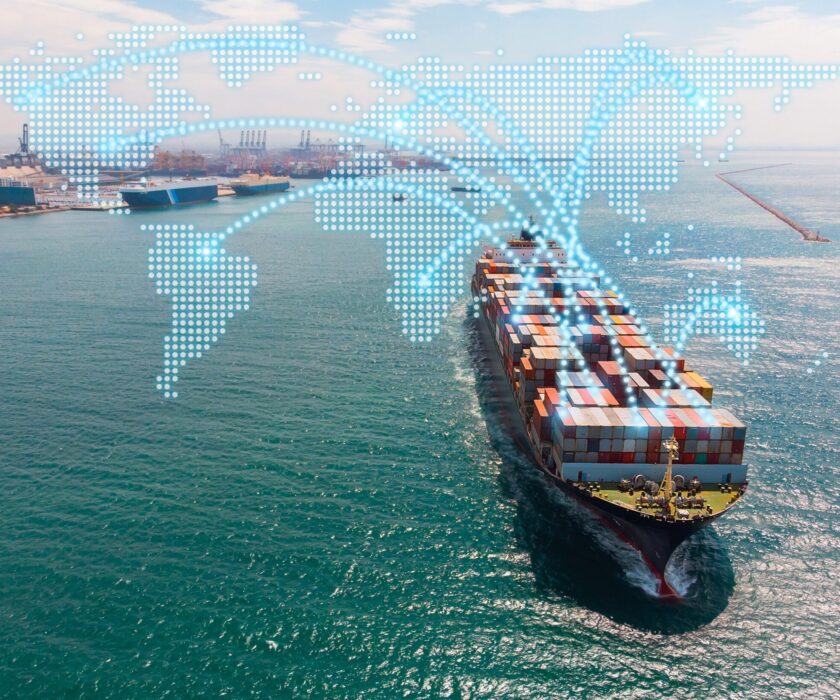Introduction
At North Star Global, we pride ourselves on delivering innovative logistics solutions that empower businesses to thrive in a complex global marketplace. Central to modern shipping is the role of Non-Vessel Operating Common Carriers (NVOCCs), pivotal players in the logistics ecosystem that facilitate international trade without owning vessels. As of May 14, 2025, NVOCCs remain indispensable, adapting to technological advancements and shifting trade dynamics. This article traces the history of NVOCCs, their evolution, and their enduring significance, offering insights to help our clients navigate the global supply chain with confidence.
Origins of NVOCCs: The Early Days
The concept of NVOCCs emerged in the mid-20th century as global trade expanded and shipping demands grew. Unlike traditional ocean carriers that owned and operated vessels, NVOCCs acted as intermediaries, consolidating cargo and booking space on ships without physical assets. The term “Non-Vessel Operating Common Carrier” was formalized in the United States under the Shipping Act of 1916, which established the framework for common carriers—entities responsible for transporting goods for multiple shippers under published tariffs.
In the 1950s and 1960s, the rise of containerization revolutionized maritime trade, enabling standardized cargo handling and reducing costs. This innovation created opportunities for NVOCCs to aggregate smaller shipments into full container loads (FCL) or less-than-container loads (LCL), offering cost-effective solutions for small and medium-sized businesses. Early NVOCCs, such as Sea-Land Service and American Export Lines, leveraged containerization to streamline operations, laying the groundwork for modern freight forwarding.
Regulatory Milestones: The Shipping Acts
The role of NVOCCs was significantly shaped by US regulatory changes. The Shipping Act of 1984, a landmark piece of legislation, deregulated the ocean shipping industry, allowing NVOCCs to set their own rates and enter into service contracts with shippers. This act distinguished NVOCCs from freight forwarders, defining them as carriers that issue bills of lading, assume liability for cargo, and contract space with vessel-operating carriers. The act also required NVOCCs to file tariffs with the Federal Maritime Commission (FMC), ensuring transparency and accountability.
The Ocean Shipping Reform Act of 1998 further liberalized the industry, introducing confidential service contracts and reducing tariff-filing requirements. This enabled NVOCCs to offer more flexible pricing and customized services, fostering competition and innovation. By the early 2000s, NVOCCs were handling a significant portion of US import and export cargo, particularly for SMEs entering global markets.
Global Expansion and the Rise of Consolidation
The 1990s and 2000s marked a period of rapid globalization, with NVOCCs expanding beyond the US to Europe, Asia, and Latin America. The growth of e-commerce, spurred by platforms like Amazon and Alibaba, increased demand for efficient, cost-effective shipping solutions. NVOCCs capitalized on this trend by offering consolidated shipping services, combining multiple small shipments into single containers to reduce costs and improve delivery times.
During this period, major NVOCCs like Expeditors International, Kuehne+Nagel, and DHL Global Forwarding emerged as industry leaders, leveraging global networks and advanced logistics capabilities. These companies invested in technology, such as electronic data interchange (EDI) and tracking systems, to enhance visibility and efficiency. The ability to provide end-to-end solutions, from origin to destination, solidified NVOCCs’ role as critical partners in the supply chain.
Technological Advancements and Modern NVOCCs
The 2010s brought transformative technological advancements to the logistics industry, reshaping the NVOCC landscape. Digital platforms, cloud-based software, and artificial intelligence enabled NVOCCs to optimize operations and improve customer experiences. For example, real-time tracking and automated customs clearance streamlined cross-border shipments, while predictive analytics helped manage supply chain disruptions.
The Ocean Shipping Reform Act of 2022 further modernized the industry, addressing issues like port congestion and carrier practices exposed during the COVID-19 pandemic. The act strengthened FMC oversight, requiring NVOCCs to maintain accurate service contracts and comply with fair pricing standards. This regulatory update, combined with digital innovation, positioned NVOCCs to handle the complexities of 2020s trade, including US-China tariff fluctuations and supply chain realignments.
In 2025, NVOCCs are at the forefront of e-commerce logistics, supporting the projected $7.4 trillion global e-commerce market. They offer specialized services like Amazon FBA (Fulfillment by Amazon) shipping, consolidating small parcels for cross-border delivery. North Star Global, as a modern NVOCC, leverages AI-driven analytics and blockchain for secure documentation, ensuring seamless operations for clients in industries ranging from electronics to textiles.
Key Contributions of NVOCCs
NVOCCs have played a transformative role in global trade, with several key contributions:
-
Accessibility for SMEs: By consolidating shipments, NVOCCs make international shipping affordable for small businesses, leveling the playing field with larger corporations.
-
Flexibility and Customization: NVOCCs offer tailored solutions, such as LCL and FCL services, multiCoordinated route planning and door-to-door delivery, meeting diverse shipper needs.
-
Risk Management: As common carriers, NVOCCs assume liability for cargo, providing shippers with financial security and peace of mind.
-
Global Reach: With networks spanning multiple continents, NVOCCs facilitate trade in emerging markets like Vietnam, which exported $499.8 billion in 2024.
-
Efficiency and Cost Savings: By negotiating rates with carriers and optimizing container space, NVOCCs reduce shipping costs, benefiting consumers and businesses.
Challenges and Opportunities
Despite their success, NVOCCs face challenges in 2025:
-
Geopolitical Tensions: US-China tariffs, currently at 30% under a 90-day truce, create uncertainty. NVOCCs must navigate these costs while maintaining competitive pricing.
-
Sustainability Pressures: With 60% of e-commerce shoppers prioritizing eco-friendly shipping, NVOCCs are adopting green practices like carbon-neutral routes and electric vehicle fleets.
-
Port Congestion: Global port bottlenecks, exacerbated by labor disputes and infrastructure gaps, require agile route planning.
These challenges present opportunities for innovation. North Star Global is investing in sustainable logistics and digital platforms to enhance transparency and efficiency, ensuring clients remain competitive in a dynamic market.
North Star Global’s Role as an NVOCC
As a leading NVOCC, North Star Global builds on the industry’s rich history to deliver cutting-edge solutions. Our services include consolidated shipping, customs clearance, and real-time tracking, supported by a global network and advanced technology. We help clients navigate regulatory changes, optimize supply chains, and meet sustainability goals, ensuring seamless trade in markets like the US, Vietnam, and the EU.
Conclusion
The history of NVOCCs reflects a journey of adaptation and innovation, from the early days of containerization to the digital age of 2025. Regulatory reforms, technological advancements, and globalization have transformed NVOCCs into indispensable partners in international trade. At North Star Global, we honor this legacy by providing reliable, efficient, and sustainable logistics solutions. As global trade evolves, we remain committed to guiding our clients toward success, ensuring their businesses shine brightly in the global marketplace.


